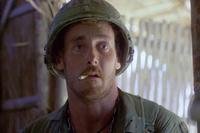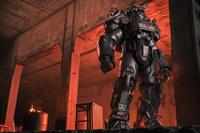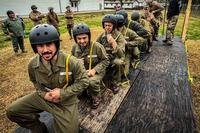Dan Gutzmann knew he snored, but he didn’t realize exactly how bad it was until he was deployed to Kuwait. A gunner on Bradley tank, Gutzmann and his regimen slept together in the tank, tight quarters for sure. Already self-conscious, Gutzmann felt even worse when his fellow soldiers told him that his loud snoring was preventing them from sleeping.
“My snoring was so bad that I had to sleep outside the tank so that everyone else could sleep,” said Gutzmann. “By keeping them awake and not getting quality sleep myself, I was putting everyone at risk.”
His guilt and anxiousness only exacerbated the problem. When Gutzmann got back home it was his girlfriend, who just happened to work in the medical field that threw down the gauntlet.
“She pleaded with me to seek help. She explained to me that my snoring meant that I was [potentially] not breathing while I was sleeping and that it could be a big problem,” said Gutzmann. “And she wouldn’t sleep in the same room with me.”
After participating in a sleep study, it was determined that Gutzmann was suffering from sleep apnea.
“The majority of sleep apnea patients (95%) are what we call obstructive, meaning there is some sort of obstruction in the airflow to the lungs. Air is supposed to go through the nose through the back of the nose, through the soft palate and the larynx, pass through all of that and go through the trachea into the lungs,” explains sleep expert Dr. David Saadat of Los Angeles. “Somewhere in this pathway there is an obstruction and that is why you have sleep apnea. You stop breathing because the air is not going through.”
Whether they are aware of it or not, the resulting stoppage of airflow causes a person’s brain to panic and it sends a signal to the body to wake up. This is called a “sleep event.” The average sleep apnea sufferer has up to 60 a night; Gutzmann was having 80.
He was then outfitted with a CPAP (continuous positive airway pressure) machine, which consists of a generator, a hose and a face mask that basically force air down your throat as you sleep. Gutzmann resisted the machine, rarely wore it and couldn’t imagine lugging it into the desert on deployment.
“In my experience, most people hate the whole concept of the CPAP machine. They think it doesn't work, maybe they are claustrophobic; it's ugly,” says Dr. Saadat who treats many veterans. “How am I going to sleep in the barracks or with anyone next to me with this thing strapped on my face?”
Gutzmann laughed at this notion.
“Yeah, Darth Vader is hot, said no one,” he said.
According to Dr. Saadat, sleep apnea simplified there are three recognized treatments: (1) the CPAP machine, (2) a dental device that pulls your jaw forward to open the airway and (3) some sort of surgical procedure.
The latest, which Gutzmann heard about on the radio, is the Inspire therapy for sleep apnea. When he found that he qualified for a clinical trial, he signed up right away.

Inspire therapy is a breakthrough implantable treatment option for people with sleep apnea who are unable to use or get consistent benefit from CPAP. It consists of a small accessory that is implanted in the patient’s neck and can sense when a person stops breathing. If this occurs, it provides a gentle stimulation to the tongue and other soft tissues to keep airways open throughout the night.
Obstructive Sleep Apnea (OSA) occurs when the tongue and other soft tissues relax during sleep and obstruct the airway. The Inspire therapy system works inside a patient's body, and with their natural breathing process, to treat sleep apnea. It continuously monitors breathing patterns while a patient sleeps. Based on an individual's unique breathing patterns, the system delivers mild stimulation to key airway muscles, which keeps the airway open. The Inspire system consists of three implanted components: a small generator, a breathing sensor lead, and a stimulation lead – all controlled by the small handheld Inspire sleep remote. The system is typically implanted during an outpatient procedure. A patient turns on the therapy at night before bed, and off in the morning when he or she wakes up.
Controlled by a handheld remote, one simply turns it on when going to bed and then off in the morning. Inspire therapy is a great solution for patients who are resistant to CPAP. The Inspire device has changed Gutzmann’s life.
Gutzmann served five years in the Army and left the service in 2000. He now lives in Milwaukee with his family.
"I look back at my military service and there’s absolutely no way I could’ve lugged a CPAP machine around with me,” said Gutzmann. “The Inspire device would’ve made me a better, more alert person and consequently a better, more alert soldier. That's not even mentioning the hours of sleep that those around me could’ve gotten. And, now my wife will sleep in the same room with me!”
Dr. Saadat, who has three board certifications, is one of the few doctors in Southern California who can implant the Inspire device for obstructive sleep apnea. “If anyone needs a good night’s rest, it is our men and women serving in the Armed Forces,” said Dr. Saadat. Consequently, Dr. Saadat is offering free consultations to military persons on active duty as well as military veterans. You can learn more about Dr. Saadat and Inspire therapy at his website: DrDavidSaadat.com.




